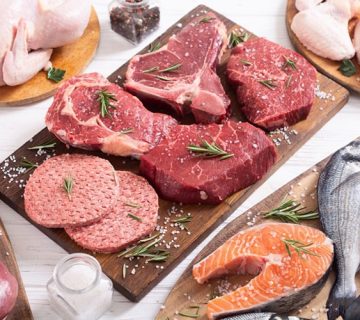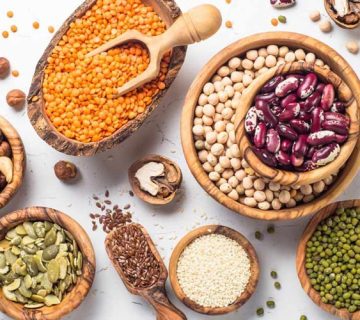Which One is the Best Choice; Texture Vegetable Protein or Meat Protein!
You need protein to build, maintain and repair every cell in your body – from bones and muscles to skin and hair – all foods contain some protein. Texture vegetable protein and animal-based proteins each have their own health benefits. In addition to the nutritional benefits, if you consider how each of these proteins influence the risk of certain chronic diseases, you can make an informed decision about choosing the best type of protein for your health.
What is texture vegetable protein?
Texture vegetable protein is made from soybeans, which belong to the legume family. The color of the beans is in green, black, white or yellow. Texture vegetable protein is a versatile high protein food that is available in different forms (whole texture vegetable protein, edamame, tofu, tempeh, soy milk and soy chips) and eaten in various ways including raw, boiled, sprouted, fried and roasted. Texture vegetable protein extracts, such as soy-protein isolate, texture vegetable protein or texture vegetable protein flours, are used to make dairy and infant formulas alternative.


What is protein?
The food you eat contains a variety of nitrogen-containing organic compounds, called amino acids. Your body combines 20 of these amino acids in certain amounts and bonds them together to form long chains called proteins. These proteins are the structural and functional components of all your cells.
The body has the ability to make 11 amino acids, which we know as non-essential amino acids, and the remaining 9 as essentials, because your body needs to obtain them from the food you eat. Each essential amino acid plays a different role in your body function and is needed in different amounts. Many foods contain one or more types of amino acids.
Essential amino acids include methionine, phenylalanine, histidine, isoleucine, leucine, lysine, threonine, tryptophan and valine.
What is complete protein?
Most plant foods lack some of essential amino acids, so you should eat a variety of fruits, nuts, and vegetables to be assured your diet has all the needed building blocks to make enough protein. Some foods contain all 9 essential amino acids, which are considered as complete proteins.
Animal products, such as meat, poultry and poultry are full of protein. Proper plant foods can also be excellent sources of protein, often with fewer calories than animal sources. In addition to products made from texture vegetable protein and texture vegetable protein itself, and other plant foods that are known as complete or exceptional in protein content are:
- Chia seeds
- Hempseed
- Buckwheat
- Pumpkin seeds
- Sprouted brown rice
- Seaweed

How much protein does my body need?
Dietary guidelines recommend that protein intake for your body should contain 10 to 35% of your daily calories, which equates to 50 to 175 grams of protein per day in a 2000 calorie diet. The recommended diet for protein is 46 grams a day for women and 56 grams for men. The Harvard T.H. Chan School of Public Health warns that protein deficiency can lead to growth failure, resulting in weakened immune systems, loss of muscle mass, reduce heart and respiratory function, and even death.
There are many forms of meat protein, all of which give you the assurance that you are getting all the amino acids in any complete protein meal. For comparison, some examples of protein in meat, at 3 ounces per serving, are:
- Chicken breast – 16.5 grams
- Beef tenderloins teak – 17 grams
- Ground lamb – 14 grams
- Lean ground beef – 17 grams
- Turkey breast – 20 grams
Although most plant proteins do not contain all the essential amino acids, but texture vegetable protein products are one of the richest sources of protein in the plant kingdom. Texture vegetable protein contains 9 essential amino acids as a complete protein. However, tryptophan levels are relatively low, so to ensure adequacy, you should eat other proteins along with texture vegetable protein.
The amount of soy protein varies slightly depending on the preparation. The following amounts per 3/4 cup serving or 150 grams:
- Green texture vegetable protein (edamame) – 19 grams
- Texture vegetable protein, mature – 27 g
- Texture vegetable protein, sprouted – 13 g
- Firm tofu – 26 grams
Therefore, the protein content of several texture vegetable protein products is comparable to that of meat base protein. Serving of a mature texture vegetable protein has more protein than serving of beef steak. The amount of protein in tofu is significantly higher than chicken breast.






